Select a Lesson
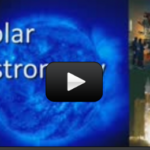 | Special Science Teleclass: Solar Astronomy This is a recording of a recent live class I did with an entire high school astronomy class. I’ve included it here so you can participate and learn, too! Light is energy that can travel through space. How much energy light has determines what kind of wave it is. It can be visible light, x-ray, radio, … Continue reading "Special Science Teleclass: Solar Astronomy" |
 | Special Science Teleclass: Black Holes This is a recording of a recent live teleclass I did with thousands of kids from all over the world. I’ve included it here so you can participate and learn, too! We’re ready to deal with the topic you’ve all been waiting for! Join me as we find out what happens to stars that wander … |
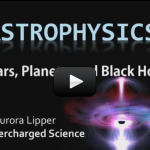 | Special Science Teleclass: Astronomy This is a recording of a recent live teleclass I did with thousands of kids from all over the world. I've included it here so you can participate and learn, too Our solar system includes rocky terrestrial planets (Mercury, Venus, Earth, and Mars), gas giants (Jupiter and Saturn), ice giants (Uranus and Neptune), and assorted … |
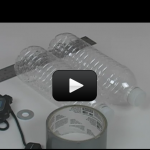 | Magnetic Tornadoes This lab is a physical model of what happens on Mercury when two magnetic fields collide and form magnetic tornadoes. You’ll get to investigate what an invisible magnetic tornado looks like when it sweeps across Mercury. Materials Two clear plastic bottles (2 liter soda bottles work well) Steel washer with a 3/8 inch hole Ruler … |
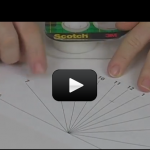 | Sundial Using the position of the Sun, you can tell what time it us by making one of these sundials. The Sun will cast a shadow onto a surface marked with the hours, and the time-telling gnomon edge will align with the proper time. In general, sundials are susceptible to different kinds of errors. If the … |
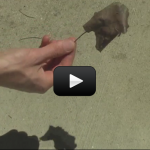 | Fire & Optics Today you get to concentrate light, specifically the heat, from the Sun into a very small area. Normally, the sunlight would have filled up the entire area of the lens, but you’re shrinking this down to the size of the dot. Magnifying lenses, telescopes, and microscopes use this idea to make objects appear different sizes … |
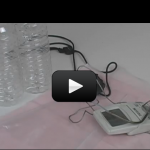 | Atmospheres Scientists do experiments here on Earth to better understand the physics of distant worlds. We’re going to simulate the different atmospheres and take data based on the model we use. Each planet has its own unique atmospheric conditions. Mars and Mercury have very thin atmospheres, while Earth has a decent atmosphere (as least, we like to … |
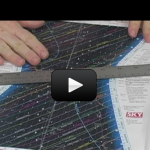 | What’s Up in the Sky? Today you get to learn how to read an astronomical chart to find out when the Sun sets, when twilight ends, which planets are visible, when the next full moon occurs, and much more. This is an excellent way to impress your friends. The patterns of stars and planets stay the same, although they appear … |
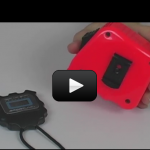 | Kepler’s Swinging System Kepler’s Laws of planetary orbits explain why the planets move at the speeds they do. You’ll be making a scale model of the solar system and tracking orbital speeds. Kepler’s 1st Law states that planetary orbits about the Sun are not circles, but rather ellipses. The Sun lies at one of the foci of the … |
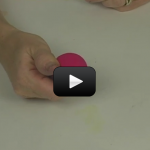 | Star Wobble How do astronomers find planets around distant stars? If you look at a star through binoculars or a telescope, you’ll quickly notice how bright the star is, and how difficult it is to see anything other than the star, especially a small planet that doesn’t generate any light of its own! Astronomers look for a … |
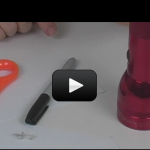 | Eclipses and Transits It just so happens that the Sun’s diameter is about 400 times larger than the Moon, but the Moon is 400 times closer than the Sun. This makes the Sun and Moon appear to be about the same size in the sky as viewed from Earth. This is also why the eclipse thing is such … |
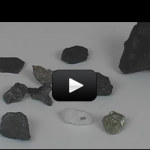 | Meteorites A meteoroid is a small rock that zooms around outer space. When the meteoroid zips into the Earth’s atmosphere, it’s now called a meteor or “shooting star”. If the rock doesn’t vaporize en route, it’s called a meteorite as soon as it whacks into the ground. |
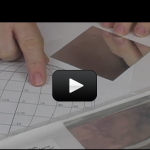 | Solar Rotation You are going to start observing the Sun and tracking sunspots across the Sun using one of two different kinds of viewers so you can figure out how fast the Sun rotates. Sunspots are dark, cool areas with highly active magnetic fields on the Sun’s surface that last from hours to months. They are dark … |
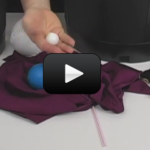 | Black Hole Bucket What comes to mind when you think about empty space? (You should be thinking: “Nothing!”) One of Einstein’s greatest ideas was that empty space is not actually nothing – it has energy and can be influenced by objects in it. It’s like the T-shirt you’re wearing. You can stretch and twist the fabric around, just … |
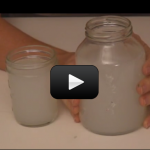 | Sky in a Jar Have you ever wondered why the sky is blue? Or why the sunset is red? Or what color our sunset would be if we had a blue giant instead of a white star? This lab will answer those questions by showing how light is scattered by the atmosphere. Particles in the atmosphere determine the color … |
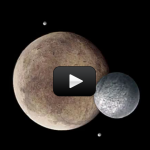 | Binary Planetary Systems A binary system exists when objects approach each other in size (and gravitational fields), the common point they rotate around (called the center of mass) lies outside both objects and they orbit around each other. Astronomers have found binary planets, binary stars, and even binary black holes. The path of a planet around the Sun … |
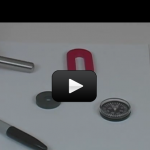 | Planetary Magnetic Fields You’re going to use a compass to figure out the magnetic lines of force from a magnet by mapping the two different poles and how the lines of force connect the two. A magnetic field must come from a north pole of a magnet and go to a south pole of a magnet (or atoms … |
 | Seasons One common misconception is that the seasons are caused by how close the Earth is to the Sun. Today you get to do an experiment that shows how seasons are affected by axis tilt, not by distance from the Sun. And you also find out which planet doesn’t have sunlight for 42 years. The seasons … |
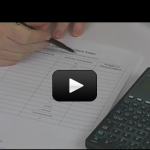 | Watch Your Weight If you could stand on the Sun without being roasted, how much would you weigh? The gravitational pull is different for different objects. Let’s find out which celestial object you’d crack the pavement on, and which your lightweight toes would have to be careful about jumping on in case you leapt off the planet. Weight … |
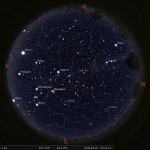 | Star Gazing Telescopes and binoculars are pretty useless unless you know where to point them. I am going to show you some standard constellations and how to find them in the night sky, so you’ll never be lost again in the ocean of stars overhead. We’re going to learn how to go star gazing using planetarium software, … |
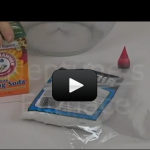 | Neptune’s Furnace We’re going to do a chemistry experiment to simulate the heat generated by the internal core of Neptune by using a substance used for melting snow mixed with baking soda. Calcium chloride splits into calcium ions and chloride ions when it is mixed with water, and energy is released in the form of heat. The … |
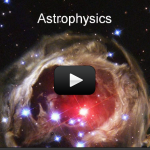 | Planetarium and Star Show Greetings and welcome to the study of astronomy! This first lesson is simply to get you excited and interested in astronomy so you can decide what it is that you want to learn about astronomy later on. We’re going to cover a lot in this presentation, including: the Sun, an average star, is the central … |
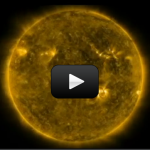 | Song of the Sun Did you know that the sun sings a song? |
 | Jupiter’s Jolts Jupiter not only has the biggest lightning bolts we’ve ever detected, it also shocks its moons with a charge of 3 million amps every time they pass through certain hotspots. Some of these bolts are cause by the friction of fast-moving clouds. Today you get to make your own sparks and simulate Jupiter’s turbulent storms. … |
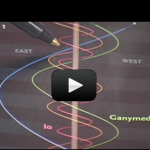 | Moons of Jupiter On a clear night when Jupiter is up, you’ll be able to view the four moons of Jupiter (Europa, Ganymede, Io, and Callisto) and the largest moon of Saturn (Titan) with only a pair of binoculars. The question is: Which moon is which? This lab will let you in on the secret to figuring it … |
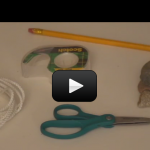 | Star Charting If you want to get from New York to Los Angeles by car, you’d pull out a map. If you want to find the nearest gas station, you’d pull out a smaller map. What if you wanted to find our nearest neighbor outside our solar system? |
 | Cosmic Ray Detector When high energy radiation strikes the Earth from space, it’s called cosmic rays. To be accurate, a cosmic ray is not like a ray of sunshine, but rather is a super-fast particle slinging through space. Think of throwing a grain of sand at a 100 mph… and that’s what we call a ‘cosmic ray’. |
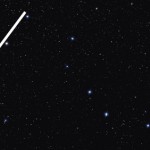 | Telling Time by the Stars The stars rise and set just like our sun, and for people in the northern hemisphere, the Big Dipper circles the north star Polaris once every 24 hours. Would you like to learn how to tell time by the stars? |
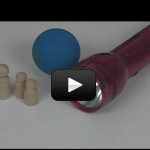 | Phases of the Moon The Moon appears to change in the sky. One moment it’s a big white circle, and next week it’s shaped like a sideways bike helmet. There’s even a day where it disappears altogether. So what gives? The Sun illuminates half of the Moon all the time. Imagine shining a flashlight on a beach ball. The … |
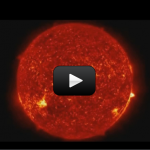 | Does it rain on the sun? Does it rain on the Sun? The answer to this is yes, however, it is not water that falls but very hot plasma. On July 19, 2012, there was an eruption on the Sun that produced a massive burst of solar wind and magnetic fields and released into Space. |
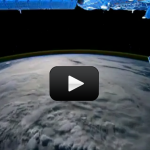 | Flying Over the Earth at Night Many wonders are visible when flying over the Earth at night, especially if you are an astronaut on the International Space Station (ISS)! Passing below are white clouds, orange city lights, lightning flashes in thunderstorms, and dark blue seas. |
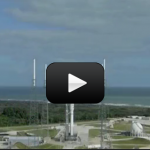 | Curiosity Rover Successfully Lands on Mars on August 5th! This is the stuff of dreams, imagination, creativity and innovation.This is especially cool for parents to have their children witness something “out of this world” live as it happens. This is American science education at its absolute finest. NASA’s Jet Propulsion Laboratory (JPL) has done it again, BIG TIME! In normal fashion for JPL in … Continue reading "Curiosity Rover Successfully Lands on Mars on August 5th!" |
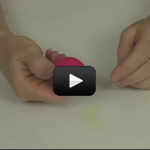 | How to Find New Planets around Distant Stars How do astronomers find planets around distant stars? If you look at a star through binoculars or a telescope, you'll quickly notice how bright the star is, and how difficult it is to see anything other than the star, especially a small planet that doesn't generate any light of its own! |
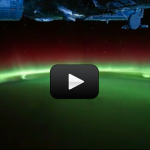 | What are Aurorae? Aurora, or 'northern lights', is the natural light display in the sky in northern regions like Canada, Alaska, and northern Eurpoean countries that have had people puzzled for centuries as to what exactly they were, and how the light displays were made. |
 | Simple Microscope & Telescope Did you know you can create a compound microscope and a refractor telescope using the same materials? It’s all in how you use them to bend the light. These two experiments cover the fundamental basics of how two double-convex lenses can be used to make objects appear larger when right up close or farther away. … |
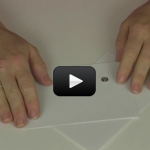 | Pinhole Solar Projector You might be curious about how to observe the sun safely without losing your eyeballs. There are many different ways to observe the sun without damaging your eyesight |
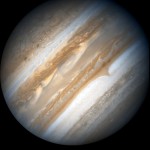 | Current Positions of Jupiter’s Moons Once you've looked at Jupiter through your binoculars, you might be wondering which moon is which. Here's how you can tell the positions of the four moons. |
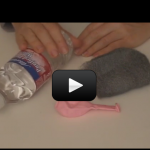 | Rusty Balloon Mars is coated with iron oxide, which not only covers the surface but is also present in the rocks made by the volcanoes on Mars. Today you get to perform a chemistry experiment that investigates the different kinds of rust and shows that given the right conditions, anything containing iron will eventually break down and … |
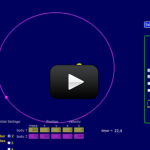 | Design a Solar System What would happen if our solar system had three suns? Or the Earth had two moons? You can find out all these and more with this lesson on orbital mechanics. Instead of waiting until you hit college, we thought we'd throw some university-level physics at you... without the hard math. |
 | Star & Planet Trails These are a set of videos made using planetarium software to help you see how the stars and planets move over the course of months and years. See what you think and tell us what you learned by writing your comments in the box below. |
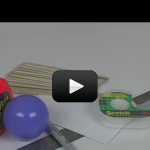 | Build a REAL Scale Model of the Solar System Ever wonder exactly how far away the planets really are? Here's the reason they usually don't how the planets and their orbits to scale - they would need a sheet of paper nearly a mile long! |
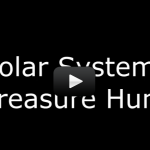 | Solar System Treasure Hunt Planetarium Star Show (either live or by listening to the MP3 download), treat your kids to a Solar System Treasure Hunt! You'll need some sort of treasure (I recommend astronomy books or a pair of my favorite binoculars, but you can also use 'Mars' candy bars or home made chocolate chip cookies (call them Galaxy Clusters) instead. |
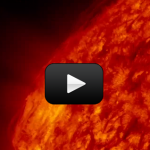 | Solar Flares Why does the Sun flare? Unpredictably, our Sun unleashes tremendous flares expelling hot gas into the Solar System that can affect satellites, astronauts, and power grids on Earth. This close up of an active region on the Sun that produced a powerful X-class flare was captured by the orbiting TRACE satellite. |
 | How to View the Sun Safely You know you're not supposed to look at the sun, so how can you study it safely? I'm going to show you how to observe the sun safely using a very inexpensive filter. I actually keep one of these in the glove box of my car so I can keep track of certain interesting sunspots during the week! |
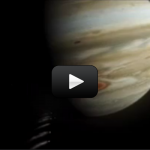 | Recent Astronomical Events Spectacular images of Jupiter during and after impacts, when over twenty fragments of Comet Shoemaker-Levy 9 smashed into the planet in July 1994. |
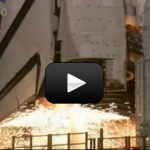 | Space Shuttle Launch Something every person should do in their lifetime is watch a rocket or space shuttle launch. Since this is getting harder and harder, and most folks don't live in a convenient area for viewing launches, here's one of the best launches filmed on video. |
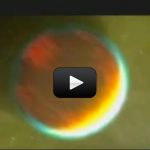 | The Great Observatories Lyman Spitzer was a theoretical physicist and astronomer who worked on star formation and plasma physics. The scape telescope named after him is equipped with infrared imaging capability that enables the telescope to see through dust and gas clouds to reveal what lies underneath. |
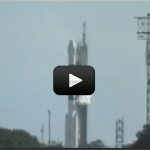 | Recent Missions Launch and flight teams are in final preparations for the planned Jan. 12, 2005, liftoff from Cape Canaveral Air Force Station, Fla., of NASA's Deep Impact spacecraft. The mission is designed for a six-month, one-way, 431 million kilometer (268 million mile) voyage. |
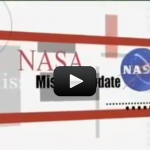 | Fermi (GLAST) Mission Enrico Fermi gave physics a give leap as he uncovered many puzzles in quantum mechanics and nuclear physics. Fermi had the rare ability to work with both experimental and theoretical physics who also could do the math and teach students in his spare time. |
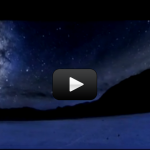 | Kepler Mission Kepler was the mind that pulled together the observations of Galileo and the data from Tycho to figure out how the planets moved around the sun. |
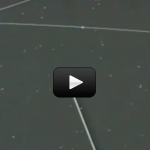 | Historic Space Missions In 1977, NASA launched two small spacecraft called Voyager 1 and Voyager 2. Weighing only 800 kgs each, they collected a wealth of scientific data and thousands of photographs of the four giant planets in our Solar System. |
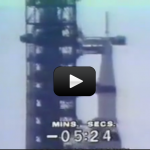 | Apollo 11/Saturn V Rocket Launch This is the actual video of the very first moon landing of the Apollo 11 mission in 1969! Neil Armstrong was the first man to set foot on the moon with his now legendary words "One small step for man, a giant leap for mankind." |
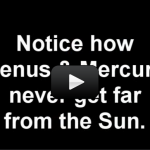 | Retrograde Motion If you watch the moon, you'd notice that it rises in the east and sets in the west. This direction is called 'prograde motion'. The stars, sun, and moon all follow the same prograde motion, meaning that they all move across the sky in the same direction. |
 | Satellite Crash! The Hubble Space Telescope (HST) zooms around the Earth once every 90 minutes (about 5 miles per second), and in August 2008, Hubble completed 100,000 orbits! Although the HST was not the first space telescope, is the one of the largest and most publicized scientific instrument around. |
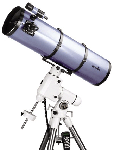 | Buying a Telescope: How to Avoid Being Ripped Off If your kid is crazy for Astronomy, get your hands on a $25 copy of Guy Ottewell’s Astronomical Calendar. You won’t find a better, more complete yearly almanac of astronomy anywhere. |
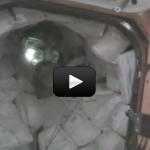 | Space Station Tour This is a FOUR-PART video series that takes you on a complete tour of the International Space Station, guided by a NASA astronaut and filmed in the summer of 2009. Enjoy! |
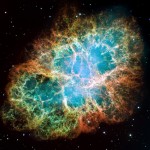 | Astronomy Lecture Series This lecture series is from an astronomy course at Ohio State. It's a 20-week college-level course, so don't feel like you've got to do it all in one night! You'll learn about the solar system, planets, and universe through a well-organized set of lectures that really brings astronomy, human history, and current technology together. |
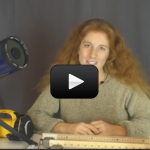 | Advanced Telescope Building So you’ve played with lenses, mirrors, and built an optical bench. Want to make a real telescope? In this experiment, you’ll build a Newtonian and a refractor telescope using your optical bench. Materials: optical bench index card or white wall two double-convex lenses concave mirror popsicle stick mirror paper clip flash light black garbage bag … |
